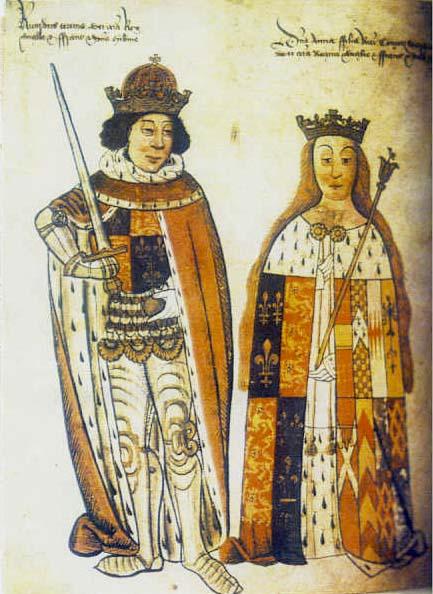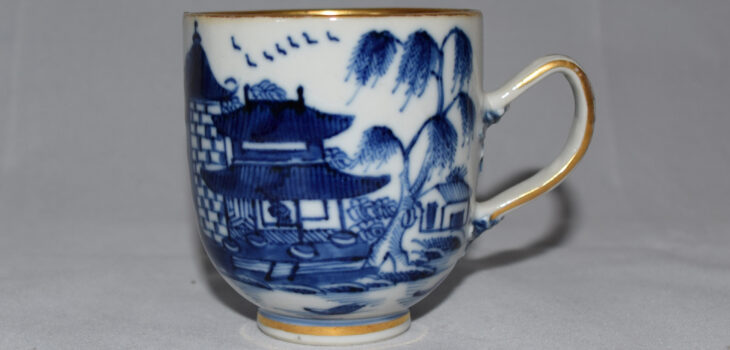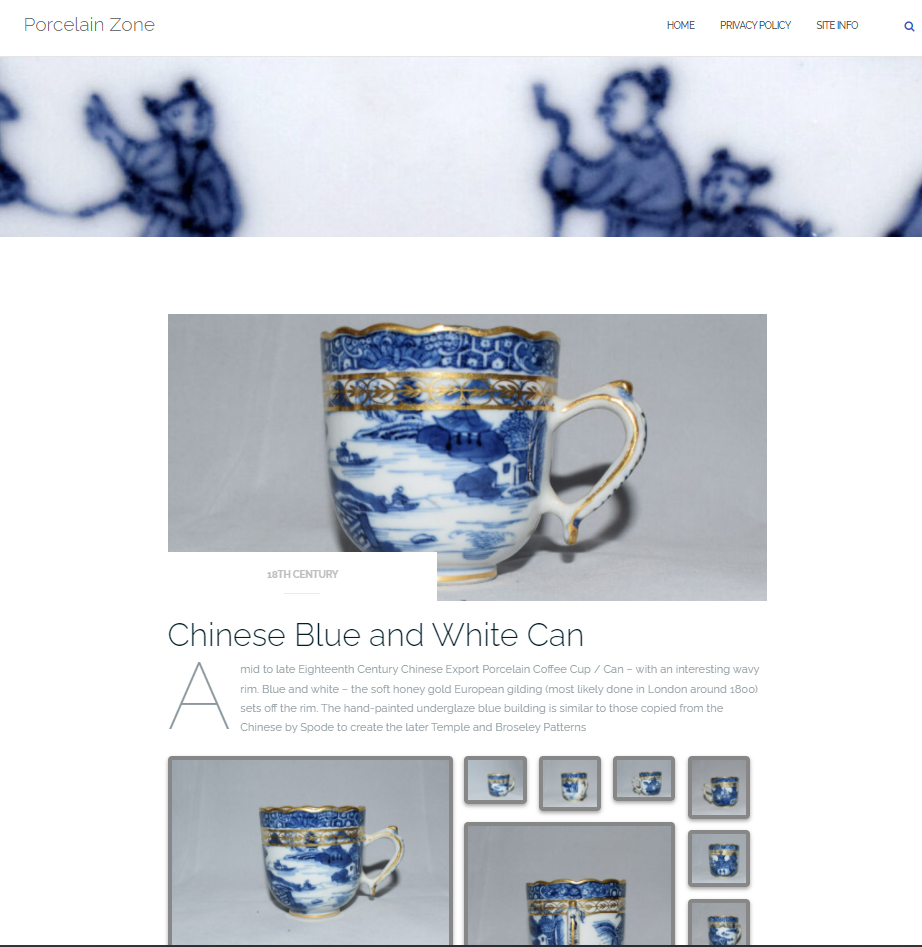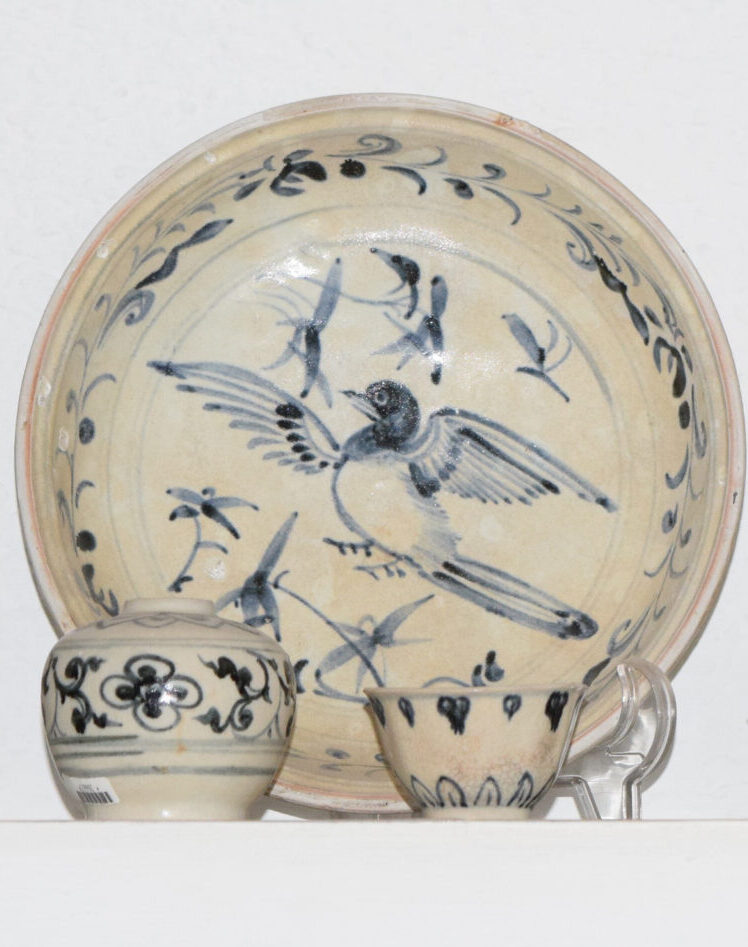 Antiques in Perspective
Antiques in Perspective
1485
The other day, I was staring at a blue and white dish on the shelves near the fireplace and started to wonder what was going on in the world when it was made. It dates from the late 15th Century which is far too wide a period for anything but a cursory look, so I decided to take a year that I already knew a little about…
1485 started on a Saturday.
Leonardo da Vinci was starting on designs for his Ariel screw – a prototype helicopter and began a series of designs for other flying machines. He was a talented military engineer as well as an accomplished artist.
Leon Battista Alberti’s life work (that took him from 1443 to 1452 to put together), was finally published (after his death). De Re Ædificatoria was the first book on Architecture ever printed.
Early in the spring of 1485, Tai Mountain (Taishen), the highest point in Shandong province of China, was stricken by a series of earthquakes that echoed a huge earthquake 3,200 years earlier – the first to be recognised as an earthquake and written about, anywhere, worldwide. The ancient earthquake was recorded because it happened just after the Chinese Ruler Fa died. It was considered a significant and foreboding event and, indeed, his son the 17th Ruler of the Xua Dynasty was the last of that dynasty to rule (although Jie managed to reign about 52 years, nearly 5 times longer than his father, Fa, so the effect wasn’t immediate).

By 1485, Graf von Abensberg (b.1441), Niclas, was a frequent tournament champion. His greatest real battle was the Battle of Singen in 1462. After a row between the sons of his liege lord, the Duke of Bavaria (Albert III), he made the mistake of arresting the younger son, Christof, at the behest of the older son, Albert (the heir, later Albert IV). Christof was eventually released and it was believed that the matter was settled, however a simmering resentment against Niclas remained. Fourteen years later, on February 28th 1485, Niclas, now in the employ of Albert IV, was returning home having just led a successful, almost bloodless campaign for the Duke. He was travelling, on horseback, with only a few companions, so was unable to defend himself when Christof, leading a large force of his own men, ambushed him and, despite his surrender, had him murdered.
Anne Neville (b. 11th June 1456), widow of Edward of Lancaster and co-heiress (with her sister) of the vast estates and wealth of her father (Richard Neville, Earl of Warwick) had a short but politically significant life. Her first marriage, when she was about 14, made her Princess of Wales and was arranged to call an end to the war between Lancaster and York (now known as the War of the Roses). As the only son her husband, Edward, was in line to succeed his father Henry VI, but he died at the Battle of Tewkesbury aged 17. Her sister, Isabel, married George, Duke of Clarence. Following Edward’s death, Anne married George’s brother, Richard Duke of Gloucester (better known as Richard III). This was a huge political and financial coup for the Plantagenet family, bringing both Neville Heiresses into the family. On March 16th 1485, the day she died (possibly of Tuberculosis or possibly, as later Tudor rumours suggested, poisoned by her husband), there was an eclipse. The second unusual natural phenomenon of the year.
In June, 1485, Matthias of Hungary took control of Vienna and made it his Capital.
Between June and August, outbreaks of Sweating Sickness started in England. It spread very quickly and was used by the Earl of Derby (Thomas Stanley) as an excuse not to join Richard III in his battles against the Welsh upstart Harri Tudur. There has been much speculation on what caused the virus and if it was similar to Hantavirus. There is also some speculation whether the Plantagenet dynasty would have ended so badly, if Derby and his forces had fought alongside Richard.
On the 7th August, the Duke of Albany, Alexander Stewart, died in France. The son of James II of Scotland and brother to James III and John, Earl of Mar, he led a very tempestuous life. As the Earl of March he maintained the border between Scotland and England, aggressively. Suspected of plotting with the Earl of Mar to steal the Scottish throne, they were imprisoned in Edinburgh Castle. Mar died, but Alexander escaped. Much piqued by his arrest and imprisonment, he teamed up with the King of England, Edward IV and with the help of Richard, Duke of Gloucester invaded Scotland. James was captured and brought to Edinburgh where he, in turn, was imprisoned. Alexander agreed to be pronounced Regent. However, he had second thoughts and released James. Their relationship, never trustful, continued to deteriorate until Alexander was forced to flee. Initially he went to Dunbar, but on the death of Edward IV, his staunchest and most powerful ally, on 9th April 1483, he took refuge in England. He tried a second invasion of Scotland in 1484 but was beaten back (though James spared his life). He escaped to France where he joined the court in Paris. He enjoyed court events joining in most sporting activities, however, he died after an accident at a jousting tournament, when it is believed a Splinter pierced his eye.
August 22nd 1485 Harri Tudur’s claim on the English throne culminated in the Battle of Bosworth. Richard III’s erstwhile glorious military career ended in ignominious defeat, making the victorious Harri, Henry VII. Ever cunning, Henry marked his victory as being a day earlier, August 21st so that all who opposed him on Bosworth Field could be declared traitors. Richard was the last English King to die in battle. He was unceremoniously buried in the grounds of Grey Friars Priory in Leicester. His tomb marker was eradicated during Henry VIII’s reign when the “English Reformation” caused the dissolution of many religious institutions and monasteries. Unexpectedly discovered a few years ago and identified through DNA, he was reburied in Leicester Cathedral in March 2015. Among the many others, on both sides, who died on August 22nd 1485, the following were listed: John Howard, 1st Duke of Norfolk (b. 1430), James Harrington, Yorkist, Richard Ratcliffe, John Babington (High Sheriff of Nottinghamshire, Derbyshire and the Royal Forests), Robert Brackenbury, Walter Devereux (8th Baron Ferrers of Chartley) and William Brandon (b.1456). A few days later on August 25th William Catesby was executed for his support of Richard III.
On September 12th Ivan III, the Grand Duke of Moscow and self-declared ruler of all of Rus (Russia) conquered the Grand Duchy of Tver as part of his campaign to consolidate the Russian states. At one point, his domain encompassed all of Northern Russia – from what is now Finland across to the Ural Mountains.
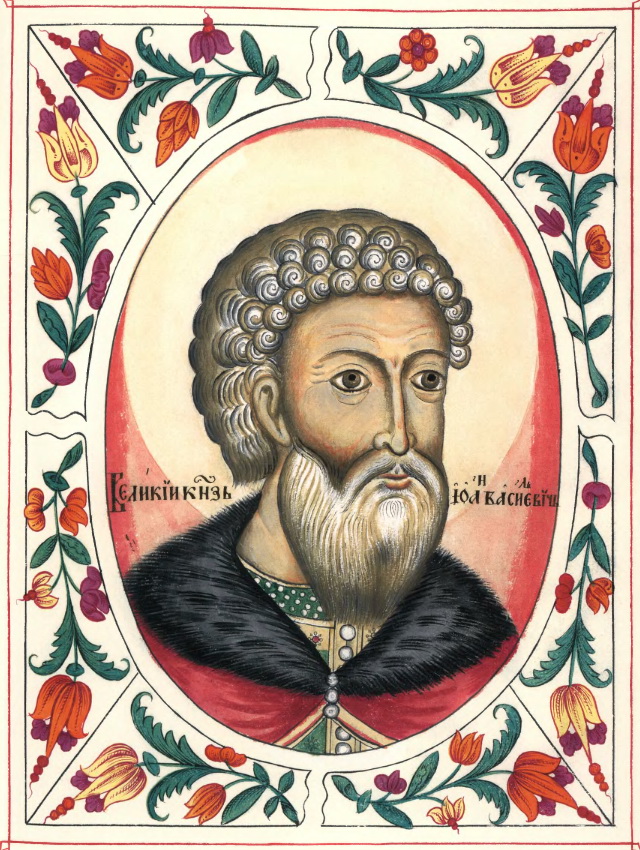
Also in September on the 15th , in Southern Europe, Pedro de Arbués was attacked in Zaragoza’s La Seo Cathedral, in Spain. He died two days later. Pedro was a Spanish priest who became a senior official of the Spanish Inquisition (which is difficult to comprehend when, while achieving his doctorate in 1473, he was serving as a professor of Ethics aka Moral Philosophical Studies). Tomás de Torquemada, who was appointed Grand Inquisitor in 1483, made Pedro (and another priest) Inquisitors Provincial for Aragon. Despite wearing armour (including a steel helmet and chainmail), Pedro was attacked while kneeling at the altar. Regardless of who may or may not have been responsible for the attack, it was used by Torquemada as an excuse to kindle what became a popular movement against the many wealthy Jewish families living in Spain – even those who had converted to Catholicism. This anti-Semitic movement was long-lasting. In 1664, Pedro de Arbués was beatified (the first step towards being made a Saint in the Roman Catholic Church) and just over 200 years later, in 1867, he was canonised (added to the Canon of Saints).
On October 30th 1485, Harri Tudur, Second Earl of Richmond, was crowned Henry VII in Westminster Abbey and the Tudor dynasty was established. Ironically, much of the early spreading of Sweating Sickness is blamed on this event as huge crowds came to celebrate the coronation. The ceremony also marked the reunion of Henry and his mother Margaret Beaufort after 14 years apart. According to the Bishop of Rochester, she cried copiously when the crown was placed on Henry’s head.
A few days later on November 2nd a year’s Truce was agreed between the warring factions in a long running dispute between the Bretons and France in a conflict now known as La Guerre Folle or Mad War. The truce failed to bring any peace as hostilities began again, in June, before the Truce officially ended and carried on until 1488 and was finally finished by a strategic marriage between Louis of Orléans (who, pardoned for his participation in the war as a minor, later succeeded Charles VIII) and Anne Duchess of Brittany.
On December 16th 1485, Catherine of Aragon was born in Alcalá de Henares, Castille. She was betrothed to Prince Arthur when he was eleven. He was ten months younger than her and was already Prince of Wales, Earl of Chester, Duke of Cornwall and heir to the throne. The intention was to forge a close alliance with Spain against France – the Hundred Years’ War between England and France had only ended a generation earlier in 1453 after 116 years of conflict. The marriage plans had started when Arthur was barely three years old. They married in 1501. Less than six months later he died of the Sweating Sickness that was still rife. The sickness could kill within 24 hours of the sweating starting and was still common until around 1551, when, after five major epidemics since 1485 and many minor outbursts, it finally faded away. Arthur was only 15 when he died. Catherine also contracted the virus but survived. She always stated that the marriage had never been consummated. A year later, plans were made by Henry VII for Catherine to be married to Prince Henry, now his heir. Catherine was the first known female ambassador in European history becoming the Ambassador for the Aragonese Crown to England in 1507. She married Henry in 1509 not long after his coronation. An intelligent and educated woman, she was a huge asset to Henry in his early years as King. She even served as England’s Regent in 1513 (while Henry was in France) and was influential in the victory of the English over the Scots at the Battle of Flodden. Although Henry sought to divorce Catherine (wanting to marry Anne Boleyn) their marriage was never officially annulled. Pope Clement refused to sanction the annulment, leading Henry to declare himself the Supreme head of England’s Church through the Act of Supremacy in 1534. In 1533, Catherine was banished to live out her days in Kimbolton Castle and Henry went on to marry Anne. Catherine died of cancer in January 1536 – to much national mourning. Anne was executed four months later. Catherine’s daughter, Mary, became queen in 1553.
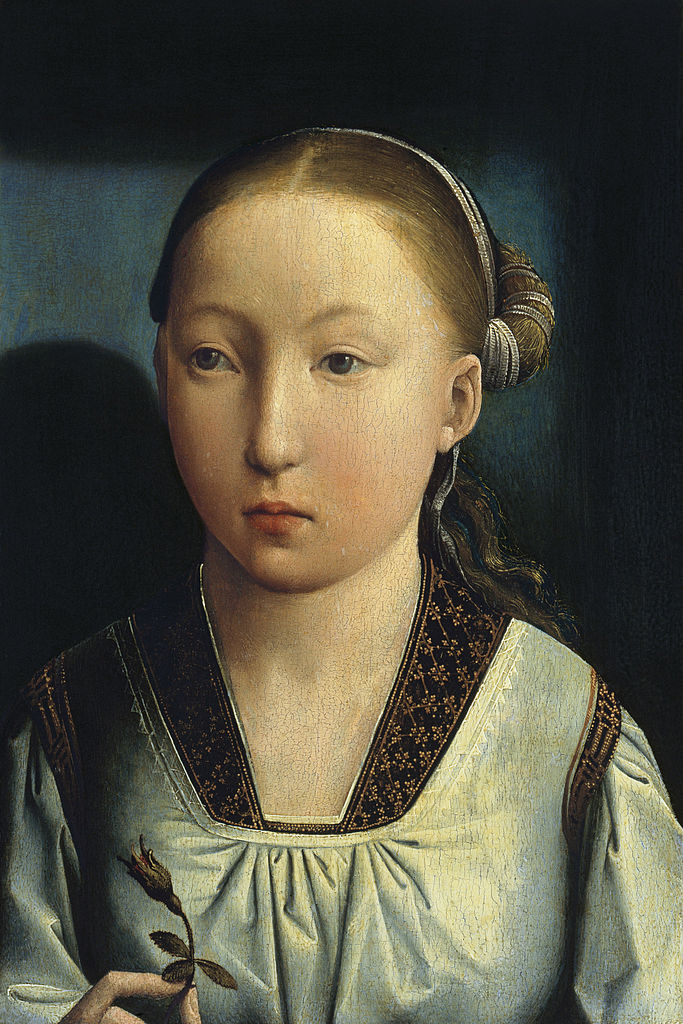
Many, many more events occurred in this year of change in Europe and across the world – but, maybe their stories are for another day.
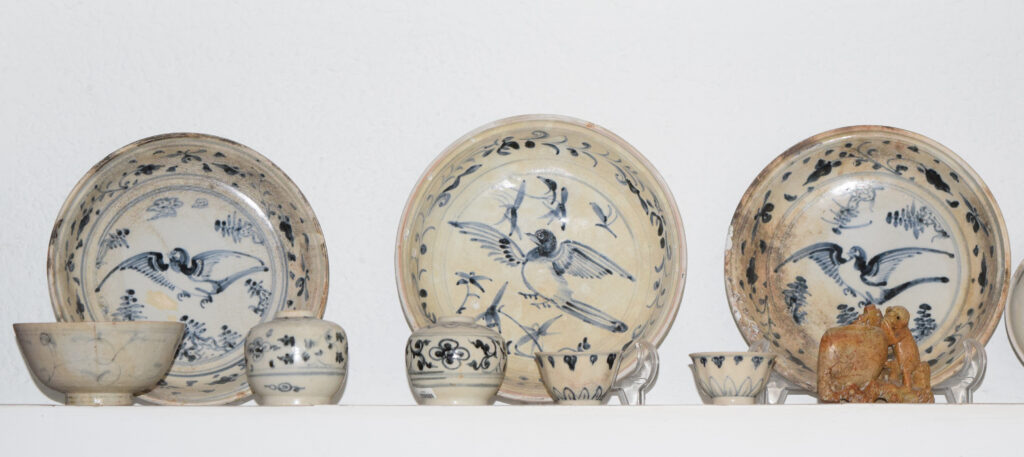
Now, the story of the blue and white dish that started this musing on 1485’s events.
The dish was made around 1485 (give or take a few years either side) in the kilns of the Red River Delta (possibly Chu Dau) in Vietnam (previously called Annam). The kilns were first discovered in 1983 and have been subject to several excavations to try and discover the sort of pottery that was made. Enough sherds have now been found to establish the origin of any whole pieces discovered, but up until the early 1990s very few had been found.
Enter the fishermen, who in the 1990s started hauling pieces of old pottery in their nets. Before long, they were deliberately dragging nets with hooks in them to dislodge pottery from the mud in which it was embedded. Eventually, it was established that a late 15th Century cargo ship carrying a huge amount of freshly made Vietnamese ceramics had been wrecked in the South China Seas. Because of its location, it is quite possible that the cargo was heading for Ayutthaya. Ayutthaya was the second capital of Siam (now Thailand). It was founded in 1350 and flourished until it was destroyed following a 14-month siege by the Burmese in 1767. It is now a UNESCO World Heritage site.
The Vietnamese Government knew little about the wreck until two antique dealers were arrested at Da Nang airport with luggage filled with artefacts from the wreck. Buried 230 feet down, the site cost c. US$14 million to excavate over four years. Over 250,000 ceramic pieces were recovered (around a 330,000 artefacts were recovered from the wreck legally and illegally). Six Museums in Vietnam now house permanent exhibitions from what became known as the Hoi An Hoard.
The bulk of the remainder was sold over several days by Butterfields in San Francisco (which included an online auction that lasted for several days, so that the pieces could be sold worldwide, a real novelty for such a prestigious sale in October 2000) – the total event, on and offline grossed more than $2.8 million.
I had huge fun trying to win bids – although it was dreadfully frustrating as I was outbid so many times – but that is where my dish originated – from a Vietnamese kiln at the end of the Plantagenet reign to California at the turn of this millennia and thence to me.
________________________________________
I am grateful to the following websites for the comprehensive background information I was able to draw on for this article
https://www.englishmonarchs.co.uk/
and lastly…
